Attitudes Attitudes are evaluative statements—either favorable or

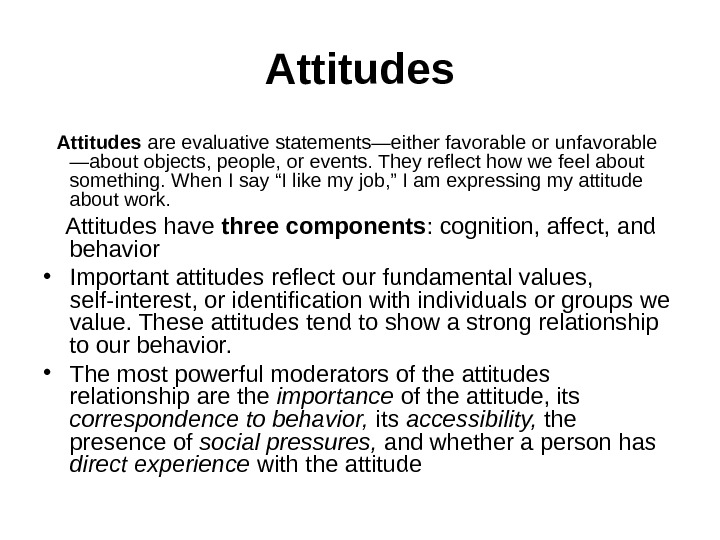

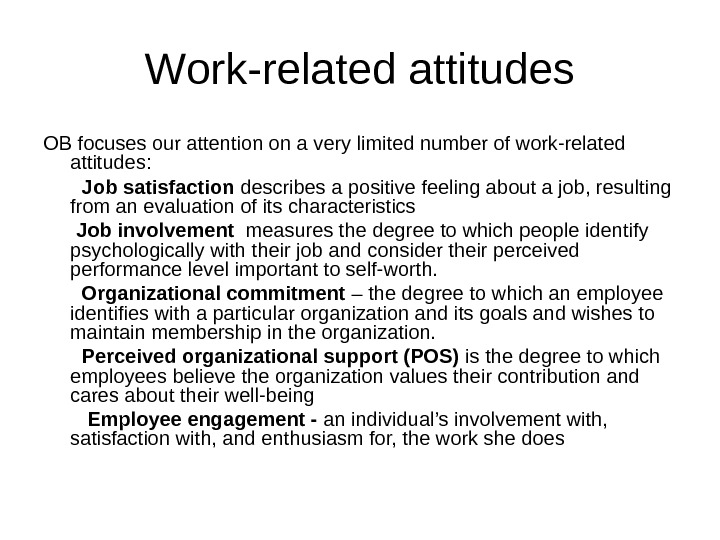

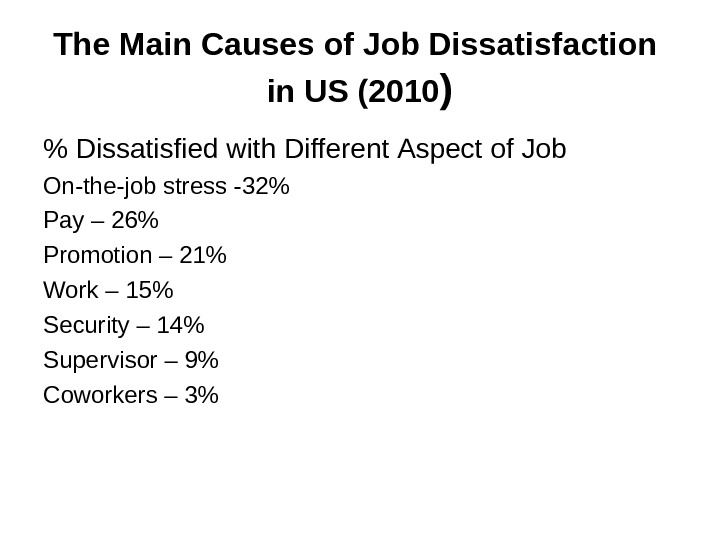
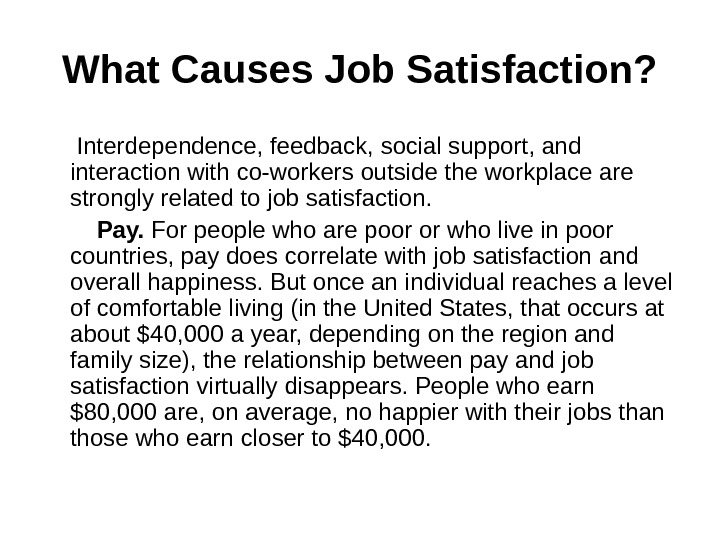
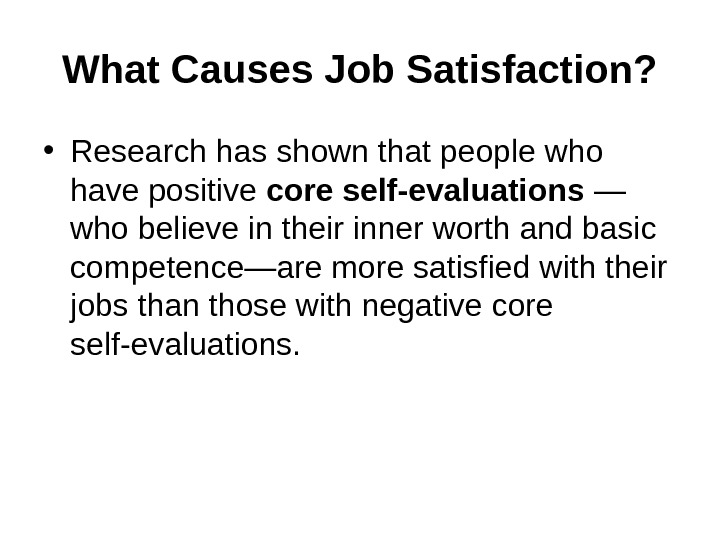
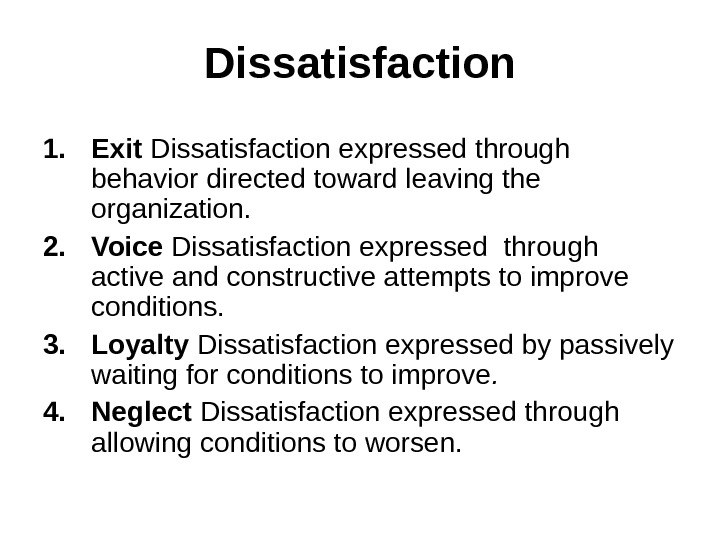
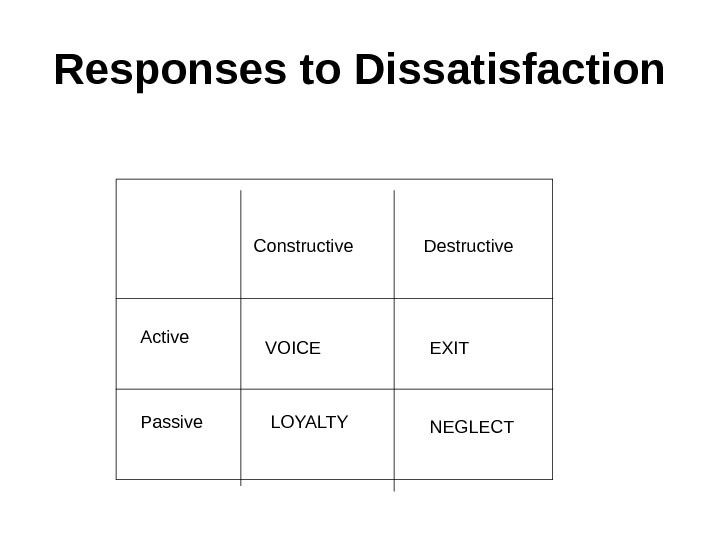
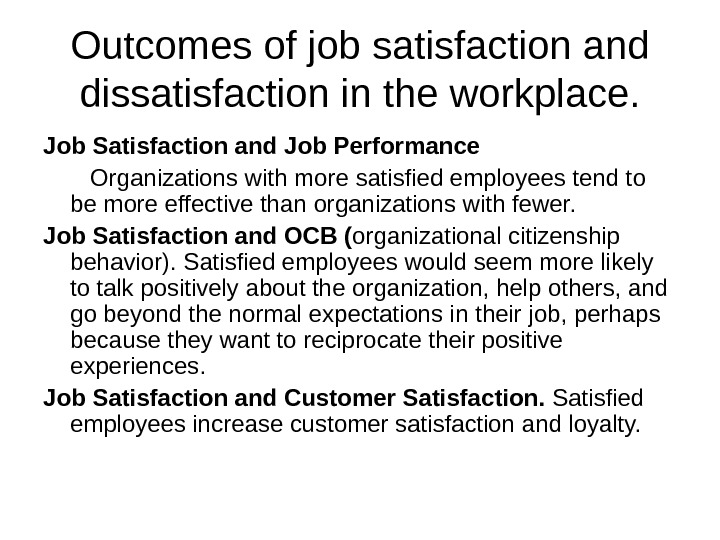

attitudes_and_job_satisfaction.ppt
- Размер: 80.5 Кб
- Количество слайдов: 11
Описание презентации Attitudes Attitudes are evaluative statements—either favorable or по слайдам
 Attitudes are evaluative statements—either favorable or unfavorable —about objects, people, or events. They reflect how we feel about something. When I say “I like my job, ” I am expressing my attitude about work. Attitudes have three components : cognition, affect, and behavior • Important attitudes reflect our fundamental values, self-interest, or identification with individuals or groups we value. These attitudes tend to show a strong relationship to our behavior. • The most powerful moderators of the attitudes relationship are the importance of the attitude, its correspondence to behavior, its accessibility, the presence of social pressures, and whether a person has direct experience with the attitude
Attitudes are evaluative statements—either favorable or unfavorable —about objects, people, or events. They reflect how we feel about something. When I say “I like my job, ” I am expressing my attitude about work. Attitudes have three components : cognition, affect, and behavior • Important attitudes reflect our fundamental values, self-interest, or identification with individuals or groups we value. These attitudes tend to show a strong relationship to our behavior. • The most powerful moderators of the attitudes relationship are the importance of the attitude, its correspondence to behavior, its accessibility, the presence of social pressures, and whether a person has direct experience with the attitude
 Cognitive dissonance – any incompatibility between two or more attitudes or between behavior and attitudes Festinger argued that any form of inconsistency is uncomfortable and that individuals will therefore attempt to reduce it. They will seek a stable state, which is a minimum of dissonance.
Cognitive dissonance – any incompatibility between two or more attitudes or between behavior and attitudes Festinger argued that any form of inconsistency is uncomfortable and that individuals will therefore attempt to reduce it. They will seek a stable state, which is a minimum of dissonance.
 W ork-related attitudes OB focuses our attention on a very limited number of work-related attitudes: Job satisfaction describes a positive feeling about a job, resulting from an evaluation of its characteristics Job involvement measures the degree to which people identify psychologically with their job and consider their perceived performance level important to self-worth. Organizational commitment – the degree to which an employee identifies with a particular organization and its goals and wishes to maintain membership in the organization. Perceived organizational support (POS) is the degree to which employees believe the organization values their contribution and cares about their well-being Employee engagement — an individual’s involvement with, satisfaction with, and enthusiasm for, the work she does
W ork-related attitudes OB focuses our attention on a very limited number of work-related attitudes: Job satisfaction describes a positive feeling about a job, resulting from an evaluation of its characteristics Job involvement measures the degree to which people identify psychologically with their job and consider their perceived performance level important to self-worth. Organizational commitment – the degree to which an employee identifies with a particular organization and its goals and wishes to maintain membership in the organization. Perceived organizational support (POS) is the degree to which employees believe the organization values their contribution and cares about their well-being Employee engagement — an individual’s involvement with, satisfaction with, and enthusiasm for, the work she does
 J ob satisfaction Measuring Job Satisfaction An employee’s assessment of his satisfaction with the job is thus a complex summation of many discrete elements. How, then, do we measure it? Two approaches are popular. The single global rating is a response to one question, such as “All things considered, how satisfied are you with your job? ” Respondents circle a number between 1 and 5 on a scale from “highly satisfied” to “highly dissatisfied. ” The second method, the summation of job facets, is more sophisticated. It identifies key elements in a job such as: — the nature of the work, — supervision, — present pay, — promotion opportunities, — relationships with co-workers. Respondents rate these on a standardized scale, and researchers add the ratings to create an overall job satisfaction score.
J ob satisfaction Measuring Job Satisfaction An employee’s assessment of his satisfaction with the job is thus a complex summation of many discrete elements. How, then, do we measure it? Two approaches are popular. The single global rating is a response to one question, such as “All things considered, how satisfied are you with your job? ” Respondents circle a number between 1 and 5 on a scale from “highly satisfied” to “highly dissatisfied. ” The second method, the summation of job facets, is more sophisticated. It identifies key elements in a job such as: — the nature of the work, — supervision, — present pay, — promotion opportunities, — relationships with co-workers. Respondents rate these on a standardized scale, and researchers add the ratings to create an overall job satisfaction score.
 T he Main Causes of Job Dissatisfaction in US (2010 ) % Dissatisfied with Different Aspect of Job On-the-job stress -32% Pay – 26% Promotion – 21% Work – 15% Security – 14% Supervisor – 9% Coworkers – 3%
T he Main Causes of Job Dissatisfaction in US (2010 ) % Dissatisfied with Different Aspect of Job On-the-job stress -32% Pay – 26% Promotion – 21% Work – 15% Security – 14% Supervisor – 9% Coworkers – 3%
 What Causes Job Satisfaction? Interdependence, feedback, social support, and interaction with co-workers outside the workplace are strongly related to job satisfaction. Pay. For people who are poor or who live in poor countries, pay does correlate with job satisfaction and overall happiness. But once an individual reaches a level of comfortable living (in the United States, that occurs at about $40, 000 a year, depending on the region and family size), the relationship between pay and job satisfaction virtually disappears. People who earn $80, 000 are, on average, no happier with their jobs than those who earn closer to $40, 000.
What Causes Job Satisfaction? Interdependence, feedback, social support, and interaction with co-workers outside the workplace are strongly related to job satisfaction. Pay. For people who are poor or who live in poor countries, pay does correlate with job satisfaction and overall happiness. But once an individual reaches a level of comfortable living (in the United States, that occurs at about $40, 000 a year, depending on the region and family size), the relationship between pay and job satisfaction virtually disappears. People who earn $80, 000 are, on average, no happier with their jobs than those who earn closer to $40, 000.
 What Causes Job Satisfaction? • Research has shown that people who have positive core self-evaluations — who believe in their inner worth and basic competence—are more satisfied with their jobs than those with negative core self-evaluations.
What Causes Job Satisfaction? • Research has shown that people who have positive core self-evaluations — who believe in their inner worth and basic competence—are more satisfied with their jobs than those with negative core self-evaluations.
 Dissatisfaction 1. Exit Dissatisfaction expressed through behavior directed toward leaving the organization. 2. Voice Dissatisfaction expressed through active and constructive attempts to improve conditions. 3. Loyalty Dissatisfaction expressed by passively waiting for conditions to improve. 4. Neglect Dissatisfaction expressed through allowing conditions to worsen.
Dissatisfaction 1. Exit Dissatisfaction expressed through behavior directed toward leaving the organization. 2. Voice Dissatisfaction expressed through active and constructive attempts to improve conditions. 3. Loyalty Dissatisfaction expressed by passively waiting for conditions to improve. 4. Neglect Dissatisfaction expressed through allowing conditions to worsen.
 Responses to Dissatisfaction Constructive Destructive VOICE EXIT LOYALTY NEGLECTActive Passive
Responses to Dissatisfaction Constructive Destructive VOICE EXIT LOYALTY NEGLECTActive Passive
 O utcomes of job satisfaction and dissatisfaction in the workplace. Job Satisfaction and Job Performance Organizations with more satisfied employees tend to be more effective than organizations with fewer. Job Satisfaction and OCB ( organizational citizenship behavior). Satisfied employees would seem more likely to talk positively about the organization, help others, and go beyond the normal expectations in their job, perhaps because they want to reciprocate their positive experiences. Job Satisfaction and Customer Satisfaction. Satisfied employees increase customer satisfaction and loyalty.
O utcomes of job satisfaction and dissatisfaction in the workplace. Job Satisfaction and Job Performance Organizations with more satisfied employees tend to be more effective than organizations with fewer. Job Satisfaction and OCB ( organizational citizenship behavior). Satisfied employees would seem more likely to talk positively about the organization, help others, and go beyond the normal expectations in their job, perhaps because they want to reciprocate their positive experiences. Job Satisfaction and Customer Satisfaction. Satisfied employees increase customer satisfaction and loyalty.
 Outcomes of job satisfaction and dissatisfaction in the workplace (continuation) • Job Satisfaction and Absenteeism. dissatisfied employees have high absence rates, but when there are few they have the same (low) rate of absence as satisfied employees • Job Satisfaction and Turnover. when employees have high “human capital” (high education, high ability), job dissatisfaction is more likely to translate into turnover because they have, or perceive, many available alternatives. • Job Satisfaction and Workplace Deviance. Job dissatisfaction and antagonistic relationships with co-workers predict a variety of behaviors organizations find undesirable, including unionization attempts, substance abuse, stealing at work, undue socializing, and tardiness. • Managers Often “Don’t Get It”. Regular surveys can reduce gaps between what managers think employees feel and what they really feel.
Outcomes of job satisfaction and dissatisfaction in the workplace (continuation) • Job Satisfaction and Absenteeism. dissatisfied employees have high absence rates, but when there are few they have the same (low) rate of absence as satisfied employees • Job Satisfaction and Turnover. when employees have high “human capital” (high education, high ability), job dissatisfaction is more likely to translate into turnover because they have, or perceive, many available alternatives. • Job Satisfaction and Workplace Deviance. Job dissatisfaction and antagonistic relationships with co-workers predict a variety of behaviors organizations find undesirable, including unionization attempts, substance abuse, stealing at work, undue socializing, and tardiness. • Managers Often “Don’t Get It”. Regular surveys can reduce gaps between what managers think employees feel and what they really feel.

